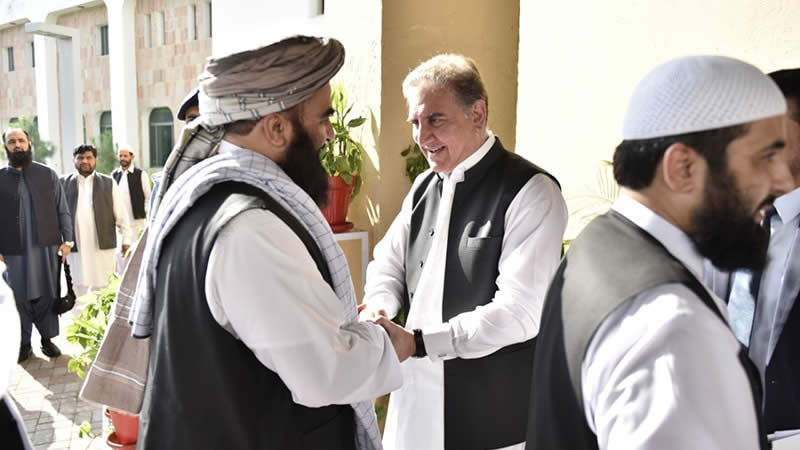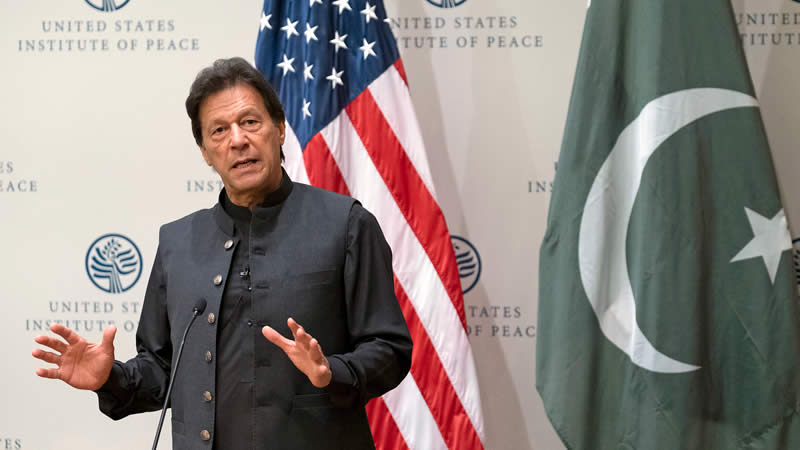 State Bank’s quarterly report issued on 4th July, 2011 is somewhat different from its pervious editions mainly because of shift in emphasis from usual assessment of economy to identifying its key challenges and offering solutions wherever possible. One of the reasons behind the new outlook could be that most of the economic developments during FY11 were already covered by the government’s Economic Survey released a few weeks ago while risks to economy have multiplied in recent weeks.As if to show that the State Bank was not responsible for compiling the growth estimates, the quarterly report has taken care to note pointedly that the provisional estimates put forward by the National Income Accounts Committee show GDP growth at 2.4 percent for 2010-11 – lower than the growth of 3.8 percent in the previous year.However, while events in the outgoing year are now history, the growth outlook, according to the SBP, will be shaped by policy responses to several domestic key challenges including, in particular, a) energy shortages which were restricting growth; b) high fiscal deficit whose financing had become difficult; c) building of domestic debt which had raised concerns for macro stability; and d) inflationary pressures that continue to show stubbornness. All these challenges seem to have been analysed comprehensively in the quarterly report along with details of appropriate policy responses for the restoration of macroeconomic stability.
State Bank’s quarterly report issued on 4th July, 2011 is somewhat different from its pervious editions mainly because of shift in emphasis from usual assessment of economy to identifying its key challenges and offering solutions wherever possible. One of the reasons behind the new outlook could be that most of the economic developments during FY11 were already covered by the government’s Economic Survey released a few weeks ago while risks to economy have multiplied in recent weeks.As if to show that the State Bank was not responsible for compiling the growth estimates, the quarterly report has taken care to note pointedly that the provisional estimates put forward by the National Income Accounts Committee show GDP growth at 2.4 percent for 2010-11 – lower than the growth of 3.8 percent in the previous year.However, while events in the outgoing year are now history, the growth outlook, according to the SBP, will be shaped by policy responses to several domestic key challenges including, in particular, a) energy shortages which were restricting growth; b) high fiscal deficit whose financing had become difficult; c) building of domestic debt which had raised concerns for macro stability; and d) inflationary pressures that continue to show stubbornness. All these challenges seem to have been analysed comprehensively in the quarterly report along with details of appropriate policy responses for the restoration of macroeconomic stability.
State Bank, nevertheless, seems to be reasonably satisfied with an improvement in the external sector. Rising prices of value-added textiles and strong growth in remittances had pushed the current account into a surplus of dollar 748 million (July-April, 2011) from a deficit of dollar 3.5 billion in the corresponding period of the preceding year. A steady growth in remittances was particularly a welcome development as monthly remittances crossed dollar 1 billion mark for two consecutive months (March and April, 2011) for the first time in the history of the country.Comfort from the external sector together with broadly contained government borrowings from the central bank had allowed the SBP to maintain the policy rate at 14 percent in the last three consecutive policy announcements (January, March and May, 2011). The quarterly report has, however, cautioned that for effective monetary management, maintaining government borrowings from SBP at end-September, 2010 levels will be critical.
Going forward, desirable revenue-generating measures (eg: broadening of the tax base, improving documentation of the economic system, gradual elimination of un-targeted subsidies and curtailment of quasi-fiscal operations) were necessary to contain the fiscal deficit to below 4.5 percent of GDP during FY12. These measures will also protect external sector account, rebuild confidence of the private sector and the country’s development partners and, more importantly, “help in reducing inflation and the crowding out of private sector credit, thereby facilitating investment, growth and employment opportunities”.Inflation outlook was, nonetheless, not encouraging due to increase in international crude oil prices and higher palm oil prices abroad, which would have an impact on the domestic market. There were also “real risks of reversal in Pakistan’s external sector performance” due to a variety of reasons. Recent political events could also have adverse implications for the business environment and the external sector, especially with respect to future IFI flows and bilateral assistance.
It is very clear from the quarterly report that the State Bank was aware of the economic situation and also prepared to offer appropriate policy advice on serious issues confronting the economy. Obviously, the most immediate problems of the economy having a direct impact on the common man are stagnation in GDP growth rate and high inflation in the country over a fairly long period of time. At an average annual growth rate of less than four percent during the last four years, the economy was not expected to generate the level of employment needed to absorb the increasing surplus labour force.The rate of inflation also continues to be in double digits since 2007-08. Increased availability of private sector credit and higher allocations for PSDP, which could serve as a driving force to accelerate development and absorb surplus labour force, have been victims of a marked deterioration in the public finances of the country. Combination of such negative developments have adversely affected the quality of life and increased frustration among vast majority of the population.
Unfortunately, State Bank also does not seem to be very optimistic about the continued positive performance of the external sector. It is of the view that imports may come under pressure due to sharp increase in crude oil prices in the international market and the fragility in global demand could hit Pakistan’s textile exports. It is probability for the first time that the State Bank has also openly expressed its views on the recent political events in the country which could jeopardise business environment and the external sector.However, while an empirical analysis of problems is generally a routine exercise, the real contribution of the State Bank this time is the detailed description of policy options to rehabilitate the economy and end uncertainty. For example, in the context of a sustainable energy policy, feasible alternatives to furnace oil were proposed to be developed urgently and gas pricing structure was proposed to be enforced to incentivise further exploration and extraction.
On fiscal reforms, State Bank has, as usual, proposed difficult policy decisions but has clearly indicated that implementation of fiscal reforms would pose political challenges. Stock of outstanding debt has more than doubled since end June 2007 and debt servicing could only be contained by borrowing less and improving its maturity profile. Overall fiscal discipline and restrictions on government borrowings were necessary to contain inflationary expectations/pressures in the economy.We feel that the State Bank’s departure from the previous practice in order to highlight the severity of the problems at hand and their possible solutions by undertaking a difficult reform agenda was a good move at this juncture. There is no harm to prescribe the right doses of medicines even if the patient is not prepared to swallow them fully. Needless to say that the State Bank’s reports are quoted widely and taken seriously and, therefore, could have an impact on economic policymaking of the country.
To be honest, however, the State Bank could only raise its voice but cannot dictate policy in areas that don’t fall in its domain. Unfortunately, however, our political leaders who have actually to make difficult choices are either simply averse to economic matters or often too busy in bickering among themselves to give a positive nod to difficult economic decisions. Hopefully, constant nudging by the State Bank to give utmost priority to the economy with a view to reducing its vulnerabilities would yield the desired results before the loss becomes irreparable.However, it needs to be pointed out that some of the State Bank’s analyses contained in the quarterly report would seem to be outdated because the latest information now available on some of the indicators was not included in the report.
For instance, the latest data indicate that government’s borrowings from the State Bank have been contained, tax revenues have exceeded the yearly target, inflationary pressures now appear to be little subdued, home remittance and exports have risen sharply to improve the external sector accounts, rupee rate has, more or less, stabilised and government appears to be serious towards addressing some of the fiscal policy challenges.All of this is a good omen for proper economic management and prospects of the economy. Had the State Bank taken the trouble to include such developments in its delayed quarterly report, its analysis of the situation would have been less pessimistic, and more balanced. Naturally, any delay in the release of SBP report will compromise its significance in relation to its relevance and utility. – Dailytimes












